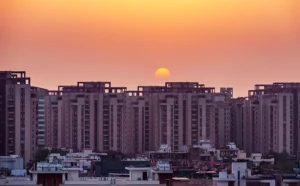The BRICS (Brazil, Russia, India, China, South Africa) Chamber of Commerce and Industry serves as an influential organization fostering economic cooperation and trade among its member nations. A recent development of great significance is the election of Mr. Neeraj K. Mishra as a governing body member of the BRICS Chamber of Commerce and Industry.
Table of Contents
With this blog, we aim to explore how the appointment of Mr. Neeraj K. Mishra, the director of Ganga Realty, is not only a huge achievement for the company but also a major accomplishment for our country. But first, let us talk about the organization itself.
BRICS Chamber of Commerce and Industry:
The BRICS Chamber of Commerce and Industry is a renowned international platform that facilitates economic collaboration, trade promotion, and business networking among its member nations. It plays a crucial role in enhancing multilateral economic cooperation, fostering innovation, and attracting investments. By leveraging the collective strength of Brazil, Russia, India, China, and South Africa, the Chamber contributes to shaping global economic policies and creating a favorable environment for businesses to thrive.
Now, How Neeraj K. Mishra can bring change at the grassroots level through this appointment?
As the director of Ganga Realty, Mr. Neeraj K. Mishra brings a wealth of experience and expertise to his role as a governing body member of the BRICS Chamber. His professional journey has been marked by the successful management of large-scale projects and a focus on sustainable architecture. With his IGBC Certified Accredited Professional status, Mr. Mishra demonstrates a commitment to integrating sustainable practices into his work, promoting environmentally friendly initiatives within the real estate sector.
Impact on the BRICS Chamber of Commerce and Industry:
Mr. Mishra’s expertise lies in overseeing the design of over 70 million sq. ft of space, spanning diverse sectors such as new construction, alterations, public and private projects, residential and commercial developments. As the director of Ganga Realty, his broad experience enables him to bring a unique perspective to each project, ensuring the integration of sustainable architectural principles and efficient project management practices. By involving all stakeholders from clients to engineering disciplines and contractors, Mr. Mishra ensures that project requirements are met, resulting in cost-effective designs that exceed clients’ expectations.
Mr. Mishra’s election as a governing body member of the BRICS Chamber presents an opportunity to utilise his expertise in sustainable architecture and project management. His understanding of the real estate sector and commitment to sustainable practices align with the Chamber’s objectives of promoting environmentally friendly initiatives and responsible business practices. Through his active involvement in the Chamber’s decision-making processes, Mr. Mishra can contribute to shaping policies that encourage sustainable development and economic growth within the BRICS nations.
Contribution to Ganga Realty:
As a governing body member of the BRICS Chamber and the director of Ganga Realty, Mr. Mishra’s knowledge, and expertise are invaluable assets to the company. His extensive experience in managing large-scale projects across different sectors and geographies, including collaborations with prestigious luxury brands, positions Ganga Realty for continued success. Mr. Mishra’s expertise facilitates the company to benefit from his ability to drive the success of its projects and operations.
Final Thoughts
With Mr. Neeraj K. Mishra’s appointment to the governing body of the BRICS Chamber of Commerce and Industry, there is great potential for advancing economic cooperation among member nations. His expertise in sustainable architecture and project management will likely contribute to the formulation of effective strategies that promote sustainable development and innovation.
By leveraging the Chamber’s collective influence, Mr. Mishra can play a pivotal role in enhancing trade relations, reducing trade barriers, and attracting investments that drive inclusive growth and prosperity for all BRICS nations.








